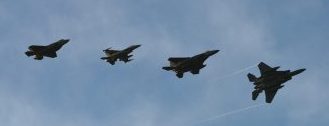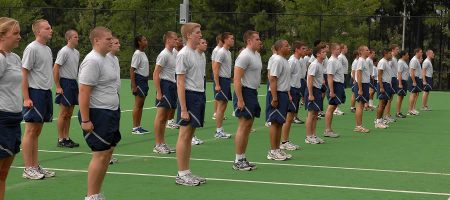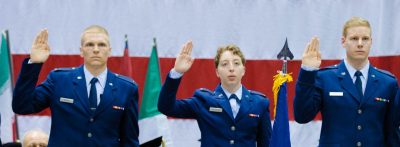
Note: Below is a guest post on Doctor Aviation. It is written by Craig, who is in the midst of becoming an Air Force pilot. This is his journey in his own words.
For some of my peers, becoming a U.S. Air Force pilot was a childhood fantasy that they had dreamt of for years as they attended air shows, read books about aviation, watched documentaries on the history and innovation of flight, and visited museums to see these amazing machines up close and personal. The thought of flying a supersonic fighter-type aircraft or even just being able to fly at all in any jet was overwhelmingly exciting but maybe somewhat unrealistic. For others, they just happened to be at the right place at the right time and were given the right opportunity to prove themselves to become a USAF pilot.

I would consider myself somewhere in between those two groups of people. Over the past few years I had the amazing opportunity to be selected for a pilot slot, undergo the rigorous training program known as Undergraduate Pilot Training, and graduate to earn the coveted silver wings. In a four-part blog series, I would like to share some of my experiences to offer some fresh perspective on what it takes to become a USAF pilot.

Like any other profession that requires millions of dollars of training and puts lives at stake, being a pilot in the U.S. Air Force is not for everyone and the Air Force (AF) takes many precautions to ensure that the right man or woman is selected for the job. Every potential student pilot is first evaluated in many areas years before they ever touch an airplane.
The first qualification is to be an officer. Being an officer means that you have at least a bachelor’s degree and have participated in some military training. There are traditionally three avenues to becoming an officer in the AF: Reserve Officer Training Corp (ROTC), the AF Academy (USAFA), and Officers Training School (OTS). Statistically, 42% commission through ROTC, 23% through the USAFA, 18% from OTS (the remaining 17% are commissioned via direct appointment).

During your time in ROTC, you are being evaluated on your leadership, character, physical fitness, and academic aptitude. To be selected for a “rated” career (rated meaning operationally related to flying), such as a pilot or avigator, you must demonstrate that you are in the top of your class. In addition, you also have to take a special test called the Test of Basic Aviation Skills (TBAS) that is designed to evaluate your hand-eye coordination, spatial orientation, and short-term memory among other things. The AF combines all of these things into a score called your Pilot Candidate Selection Method (PCSM).
Around your third year, you submit your dream sheet for which career path you would like and patiently wait for a pilot board to decide who made the cut. All of your hard work, blood, sweat and tears over the past few years in college boil down to this moment. Are you deemed worthy to be given the opportunity of a pilot slot? If so, you celebrate by telling all of your friends and family and finish your last year with the eager expectation of flying airplanes. [For the OTS route, you must have an even more stellar resume or track record to be chosen for a pilot slot. It’s more like applying for, interviewing, and being selected for a highly competitive job.]


The last part of the college journey was finishing up well and graduating to earn a bachelor’s degree. Then, and only then, were we eligible to become an officer. It’s important to note the significance of commissioning as an officer over and above the significance of being a pilot. We were often reminded throughout pilot training that we were first officers and then pilots. Being an officer meant being responsible, being role models, and living and working with integrity. Being an officer meant being a leader. All of the enlisted personnel closely monitored our conduct. And if we couldn’t live up to that, then we had no business flying jets.
In the next blog, I will describe what happens after commissioning and the final test to final make it to pilot training.
Editor’s Note: We will have to wait a few weeks for Craig’s next post, as he is currently in the midst of a month long Air Force Survival Training.
